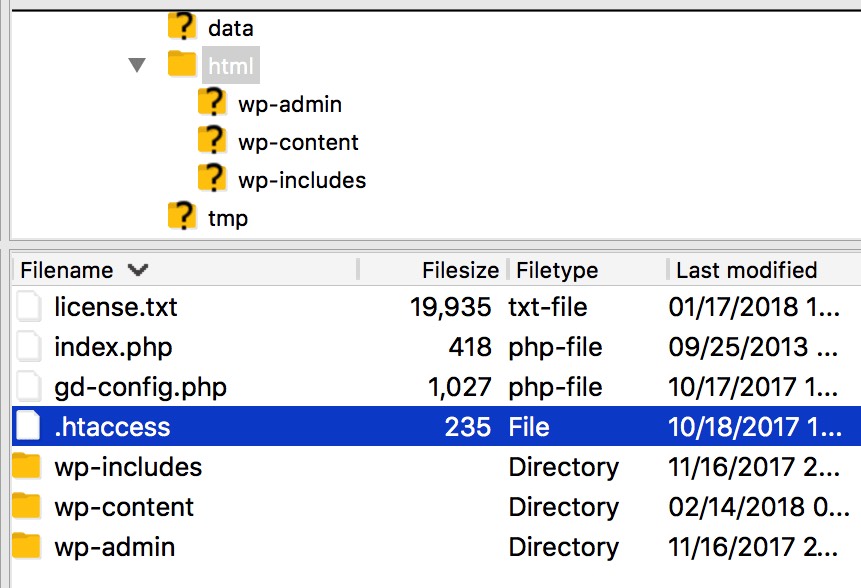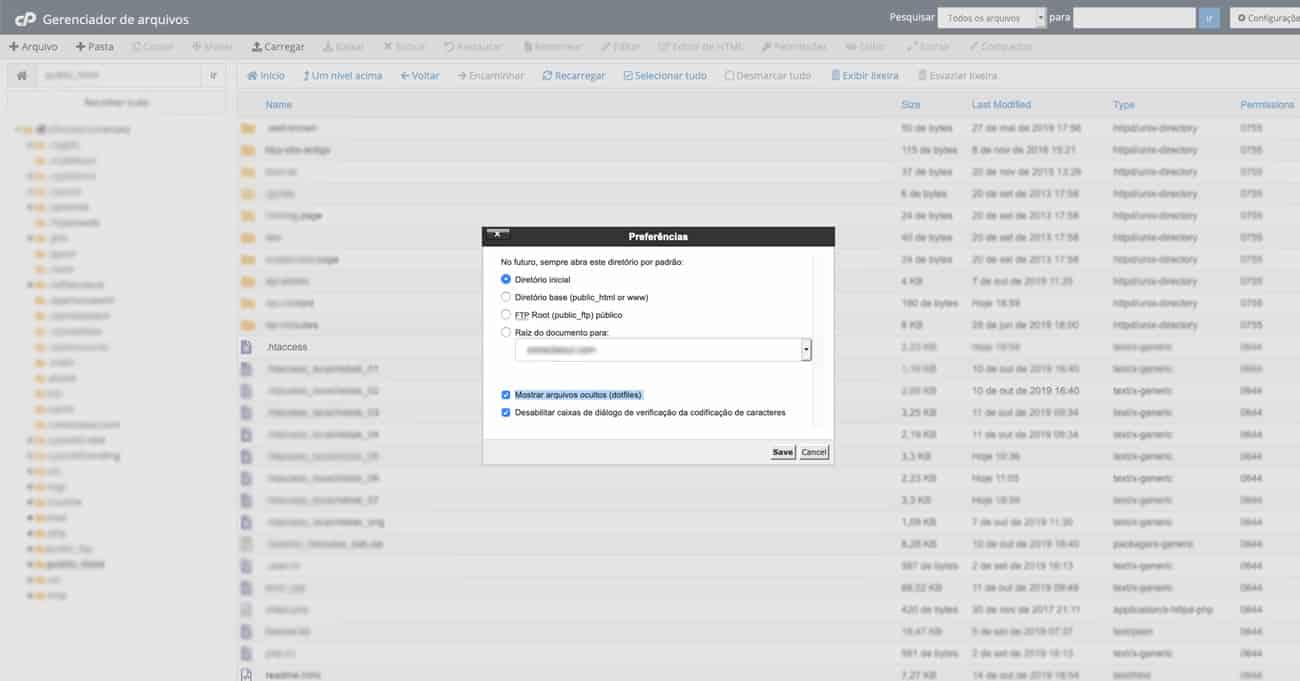

Once your FTP client is connected to your site, you should see your server’s root files in the bottom-right quadrant, like so:ģ. Grab your FTP details and log in to your site using your favorite FTP app (I’m using FileZilla).Ģ.
#Wordpress htaccess update
To update hidden files settings, click on “Settings” in the top-right corner of File Manager and in the modal that appears check “Show Hidden Files.”ġ. If you can’t see the file, you’ve either not got one or you need to change your settings for hidden files. Scroll through your files and look for the.
#Wordpress htaccess download
If you prefer to fly by the seat of your pants and edit your site live, it’s a good idea to download a copy of your. htaccess and test changes to your site’s functionality before pushing them live. Alternatively, you could use a staging site to update. So make sure you back up your site before editing this file.

But before you go hunting around for it and making changes, it’s important to understand that editing this file comes with risks-a single syntax error could mess with key functionality, or even break your site. htaccess file is located in the root directory of your site. In fact, there’s a lot you can do, such as prevent directory browsing, restrict access to PHP files, and even protect your site against script injections. htaccess to enable/disable advanced functionality on your site. It’s also possible to make your own changes to. htaccess to enable GZIP compression for your site and adds the optimal browser caching rules. This is especially common for security and caching plugins like WP Rocket, which edits. htaccess is often manipulated by plugins. But for more larger and more complex sites.

The file is automatically generated the first time you customize your s, and if you make any subsequent changes to your structure the file is automatically updated with new rules.įor many small and basic WordPress sites, handling s is all the. htaccess has one important function: it controls how your site’s s are displayed. This means you won’t be able to see it when browsing your files unless you show all hidden files on your computer. It’s a hidden file-that’s why it starts with a period-and it has no extension. But since it sets out how Apache should handle configuration for your site on a per-directory basis, you might also find versions of this file in other folders on your site. This file is usually located in the root directory of your site. Since most WordPress web hosts use Apache, most WordPress websites also have a. htaccess file is a configuration file that WordPress uses for Apache web servers.

Plus, we’ll look at some examples of what you can do with this file to improve your site’s performance. Some of this additional functionality includes locking outside access to critical files, sending custom HTTP heads, forcing SSL, and restricting access to the WordPress dashboard. But its true power lies in its ability to override your server’s settings-enabling you to add your own rules to this file that can beef up your site’s performance and security. Short for “hypertext access,” WordPress uses this file primarily to handle pretty s. htaccess configuration file is one of them. WordPress relies on several core files to run your website and the powerful.


 0 kommentar(er)
0 kommentar(er)
